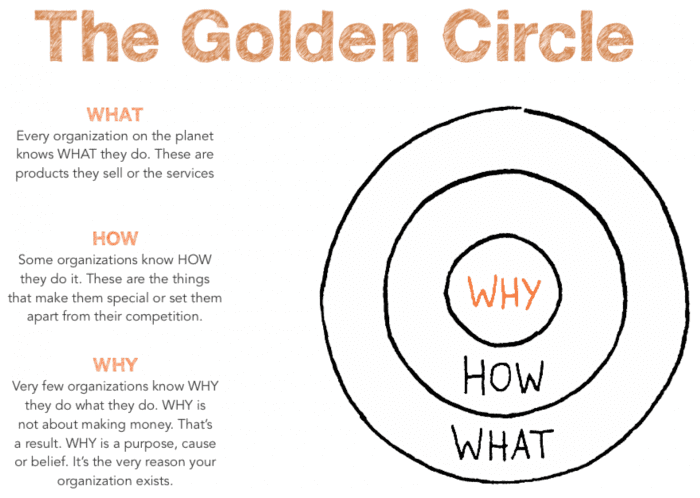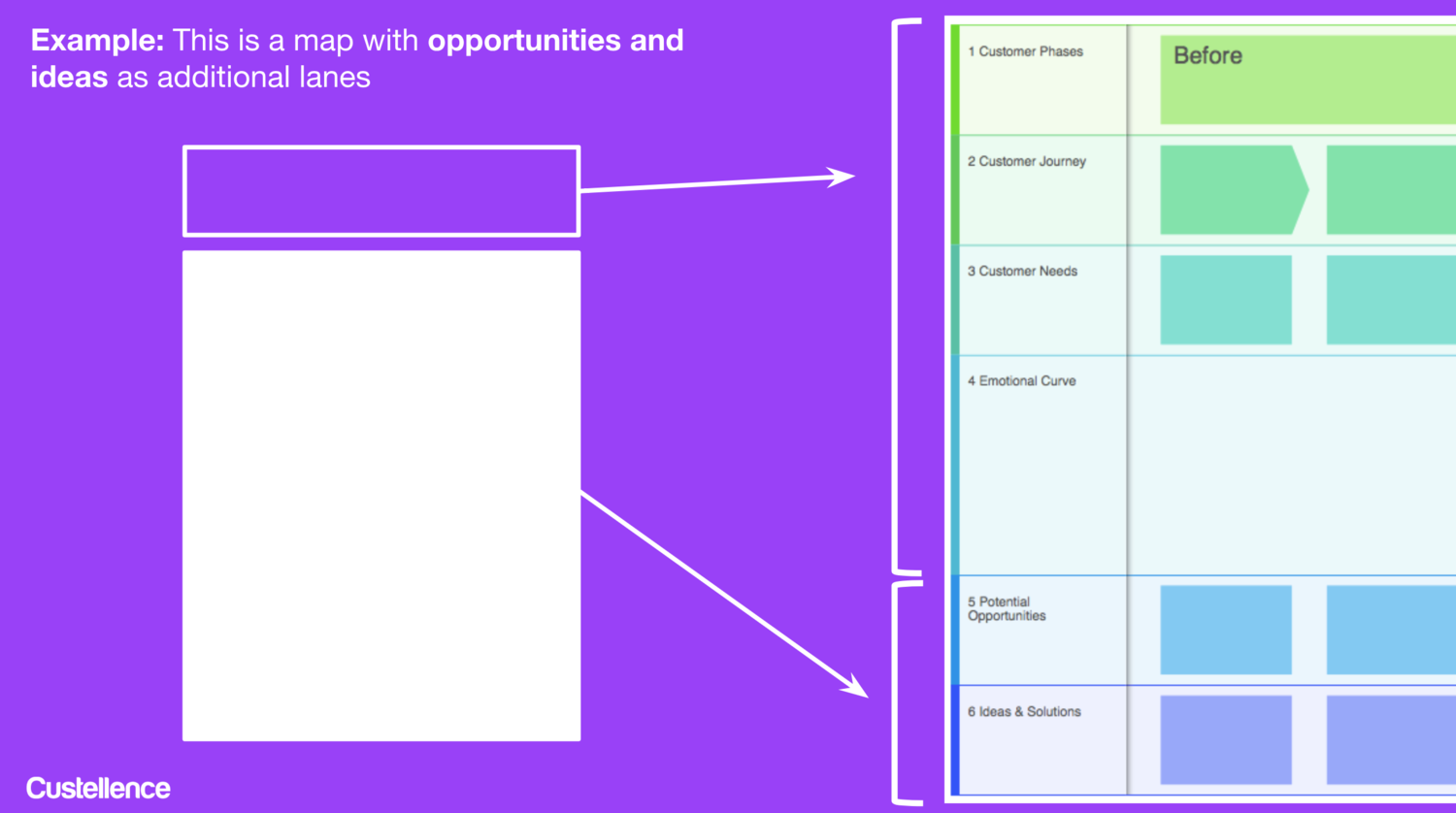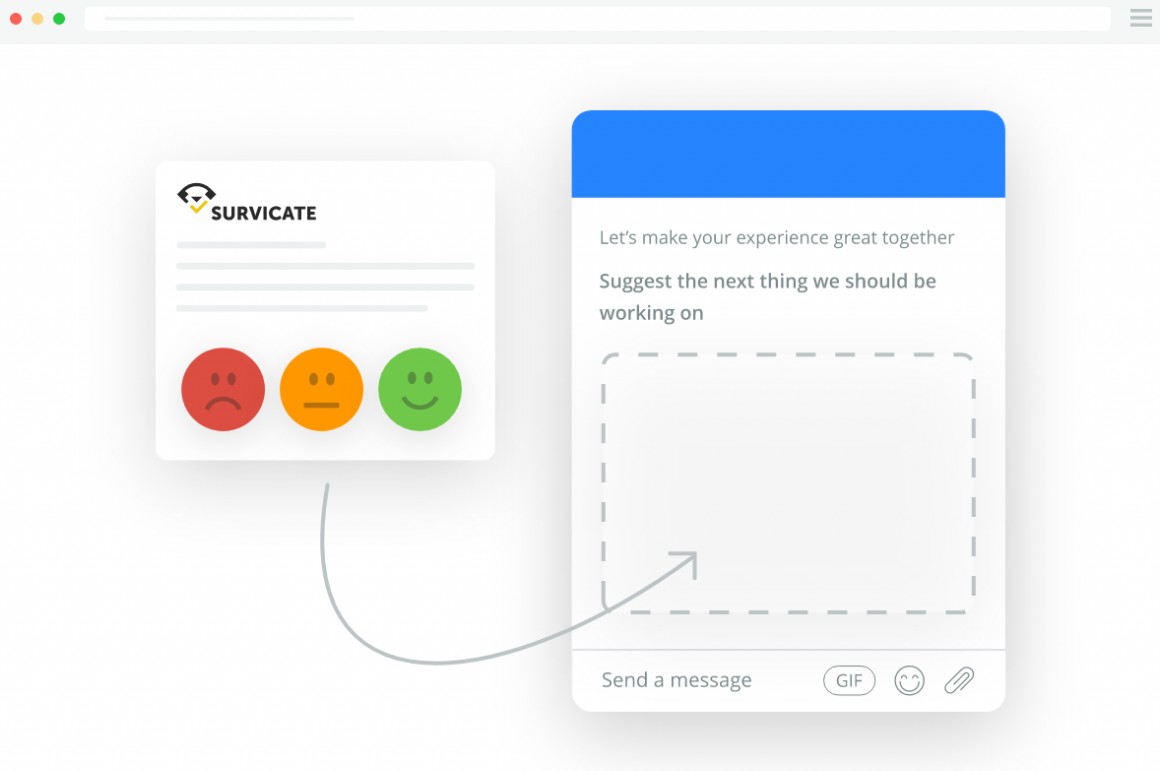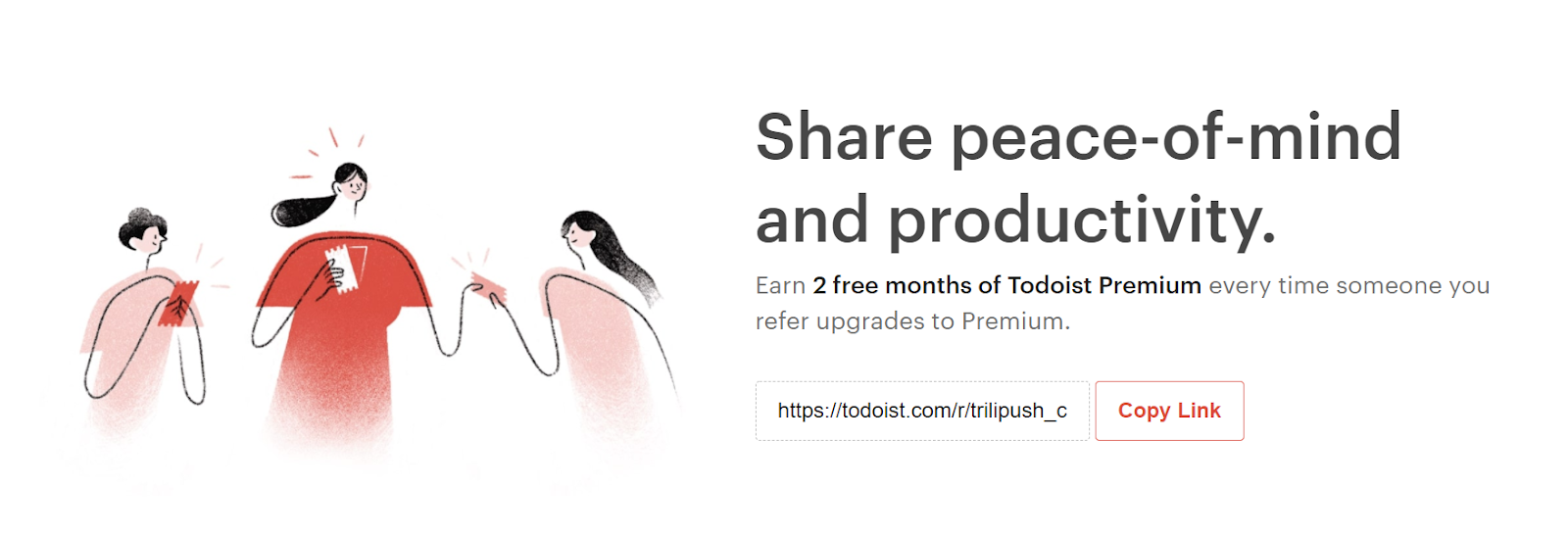Build your customer referral program without the dev time
Sign up for a free trial of GrowSurf to lower your customer acquisition costs, increase customer loyalty, and save gobs of time.
Try It FreeIf you're like most companies, you're probably spending a sizable chunk of your marketing budget on customer acquisition. Nothing wrong with that! But are you doing enough to make those customers stick around and maximize customer lifetime value?
Because if you're not, you're leaving money on the table and missing out on the many benefits of customer retention, such as lower acquisition costs, increased revenue, and positive word-of-mouth.
How so? Here are some key statistics that highlight the value of customer retention:
Acquiring new customers is 5 times more costly than keeping existing ones.
Increasing customer retention by 5% can increase profits from 25 to 95%.
Repeat customers spend 67% more than new customers.
As you can see, when it comes to growing a company sustainably and cost-effectively, turning customers into life-long fans and brand ambassadors through relationship marketing is crucial. Not only do loyal customers drive more revenue, but they also provide invaluable word-of-mouth marketing that can attract new business.
But how do you pull that off and cultivate those coveted brand ambassadors? Two words: Relationship marketing. The key is relationship marketing - a long-term strategy focused on fostering meaningful connections with customers beyond just transactions.
Relationship marketing is a customer-centric strategy that focuses on retaining customers, creating meaningful engagement, and fostering brand affinity. It involves building long-term connections with customers through personalized interactions, open communication, and delivering consistent value beyond just transactions.
However, there's more to relationship marketing than what a standard definition can encapsulate. It's a holistic approach that touches every aspect of the customer experience, from marketing and sales to customer service and product development. Relationship marketing is about showing the human side of your brand and fostering a sense of community around your products or services. It's about meaningful interactions that go beyond just features and benefits to create genuine emotional connections with customers.
There's no such thing as "love at first sight" in relationship marketing. Relationships take work and consistent effort over time, right? If you want your relationship marketing efforts to succeed, you need to build trust and rapport with customers through personalized attention, active listening, and delivering on your promises. Give your customer relationships the diligence and dedication they need to truly flourish.
If executed effectively as a core business strategy, relationship marketing can provide a multitude of far-reaching benefits for companies across industries.
Customer lifetime value (CLV) is the total revenue a customer generates over their entire relationship with a business. Maximizing CLV is one of the primary goals and key benefits of relationship marketing. By fostering loyalty through personalized attention and delivering consistent value, you increase the likelihood of repeat purchases and higher lifetime spend from each customer.
Moreover, your most loyal customers often become vocal brand advocates, creating positive buzz through word-of-mouth recommendations and online reviews. This can significantly reduce your customer acquisition costs by attracting new business with minimal marketing spend.
With a solid base of loyal, repeat customers, you don't need to rely as heavily on expensive marketing campaigns for constant customer acquisition. Since your existing customers provide a steady revenue stream, you're less likely to find yourself in a frantic scramble to attract new business just to stay afloat. This allows you to significantly reduce spending on marketing and advertising.
Additionally, your repeat customers tend to be more receptive and engaged with your brand's marketing efforts, allowing you to get better returns on any campaigns you do run. And with vocal brand advocates happily spreading the word, you benefit from essentially free word-of-mouth marketing.
Relationship marketing helps your brand stay closely attuned to evolving customer needs and preferences. After all, your existing loyal customers serve as your guiding light - the "North Star" for getting your priorities straight. Their ongoing feedback and insights are invaluable for continuously improving products and services to better meet their needs.
Since these repeat buyers represent your ideal customer profile, you can trust that their input will steer you in the right direction for meaningful innovation. Maintaining an open dialogue through relationship marketing ensures your brand doesn't become stagnant or disconnected from the customer perspective.
Now that we've covered the key benefits, let's dive into specific relationship marketing strategies and tactics that can help you create lifelong customer relationships and brand loyalty.
If you want to turn customers into raving fans, you first need to get crystal clear on your brand's core purpose and "why" behind what you do. Customers today, especially younger demographics, are much more likely to develop loyalty towards brands with a strong purpose beyond just profits, according to a study by Accenture.
As Simon Sinek famously said, "People don't buy what you do, they buy why you do it." Your brand purpose taps into the emotional drivers and higher ideals that resonate with customers on a deeper level. It's what inspires people to not just make a purchase, but to become vocal advocates for your brand.
Take the time to clearly define and articulate your company's mission, vision, values, and the positive impact you aim to have. Weave this purpose into all of your marketing and brand messaging to foster authentic connections with customers who share those same beliefs.
As Start with Why writer Simon Sinek says in his famous TEDTalk, “People don’t buy what you do, they buy why you do it.”

[Source: SmartInsights]
Sure, customers will buy your products and services partly for their tangible benefits. But a big part of it is driven by a deep need to be a part of something bigger than themselves.
If you want to truly differentiate your brand from competitors and win your customers’ undying loyalty, get out of Maslow’s basement and start appealing to their higher needs.
Unilever's Dove brand, for example, didn't just become a top personal care brand because of product quality. They cultivated immense brand loyalty by taking a stand for redefining beauty standards and promoting body positivity through diverse representation.
Similarly, Tesla's meteoric rise was fueled by Elon Musk's bold vision to accelerate the world's transition to sustainable energy. Customers rallied behind this purpose of environmental sustainability.
Other iconic brands like Nike, Lego, and Lululemon fostered cult-like followings by giving customers a sense of purpose and aspirational lifestyle to strive towards beyond just products.
To uncover and define your brand's authentic purpose, ask yourself these key questions:
Use the answers to clearly document your brand's mission, vision, values, and goals in a brand book or guidelines. This will ensure your entire team can authentically communicate that purpose through all customer touchpoints, from marketing to product experience.
Relationships are indeed a long-term investment that require consistent nurturing through personalized, relevant experiences tailored to each individual customer. Generic, one-size-fits-all messaging simply won't cut it if you want to foster genuine loyalty and brand affinity.
As relationship marketing experts note, personalization is a core component that allows you to deeply understand each customer's unique needs, preferences, and behaviors - then use those insights to deliver experiences that truly resonate.
However, personalization doesn't mean bombarding customers at every single touchpoint - that would indeed come across as pushy and desperate, which defeats the purpose. The key is identifying the most relevant, high-impact moments in the customer journey where personalized attention has the biggest positive impact.
Using tools like customer profiles and journey mapping, you can pinpoint those critical moments that matter most to each individual. Then, you can be present with timely, personalized messaging and experiences that demonstrate you truly understand and value them as a customer.
What you can do to stay top of mind among your customers is to be there for them in moments that matter most.
But you can't just wing it - delivering truly personalized experiences requires having an in-depth understanding of your customers. This means going beyond basic buyer personas to build comprehensive customer profiles that capture their unique needs, interests, motivations, and purchase behaviors.
With tools like LucidChart and Clientbook, you can then map out customer journeys and identify the most significant touchpoints for personalized outreach. This level of customer intelligence is what allows you to be present with the right message at the right time throughout their entire lifecycle.

[Image source: Custellence]
You need to operationalize your customer journey map for it to be of any use. So make sure to introduce the initiative to the entire company. You can also ask customers for feedback or insights to help you refine your customer journey map.
Once you’ve gathered all relevant input, you need to develop your milestones and create an action plan (and performance indications) that will help you achieve them.
At its core, relationship marketing is about fostering emotional connections that transcend just transactions or product features. You can't build true loyalty and brand affinity without tapping into customers' emotions on a deeper level.
This is backed by research showing that 95% of purchasing decisions are subconscious and driven by emotions, not just pure logic or rational factors. Customers buy into brands they feel an emotional resonance with.
However, creating that emotional bond is a two-way street that requires effort from both the brand and the customer. On your end as the brand...
If you don't make a concerted effort to connect with customers on an emotional level, they won't develop the deeper affinity and investment needed to become loyal, lifelong advocates for your brand. You have to give them a reason to care beyond just products or services.
On the flip side, if you as a brand aren't genuinely emotionally invested in your purpose, values, and delivering exceptional experiences, customers will pick up on that lack of authenticity. You won't have the passion and commitment required to sustain relationship marketing efforts that truly resonate.
The data backs up the immense value of emotional brand connections. Research by Forbes found that emotionally connected customers have over 300% higher lifetime value and will recommend brands at nearly double the average rate.
So how can you as a brand create those coveted emotional connections? It starts with truly understanding your customers' struggles, aspirations, and emotional drivers on a deeper level than just basic personas or demographics.
Conduct research to uncover their core values, fears, and the deeper "why" behind what motivates them. Then, reflect those genuine human insights back through your brand messaging and positioning. Show how your brand's purpose and offerings can help solve their real-world challenges and enable them to achieve more on an emotional level.
Tell authentic stories that your customers can see themselves in. Celebrate their values and life experiences. Make them feel truly seen, heard, and understood as individuals beyond just a revenue source.
And remember, true emotional connections go beyond just appealing to customers' basic self-interests or product needs. Tap into their higher values, aspirations, and desire to be part of something bigger than themselves. Show how your brand can help them become their ideal version and live a life more aligned with their purpose.
Sign up for a free trial of GrowSurf to lower your customer acquisition costs, increase customer loyalty, and save gobs of time.

Want customers to stick around? keep asking for feedback! Better yet, acknowledge and act on every feedback (positive or negative) you receive.
Consistently asking for feedback shows your customers that their opinions matter in your branding efforts, which is only fitting considering that your customers are an extension of your brand. Make them feel involved in your brand and they’re more likely to be emotionally invested in it.
Besides, consistently gathering customer feedback lets you discover things about your brand you couldn’t have known otherwise. When it comes to improving your products or services, who better to ask than the very people who love and use them?
Lastly, by asking for their feedback (and accepting them graciously), you’re letting them know that every action or decision you make as a brand is made with their best interests in mind.
Here are ways to gather feedback from your customers:

[Image source: Survicate]
By asking for input or feedback, you can get insights that will help clarify what your brand is about, what your goals are, and get an honest input or opinion on whether your solution is meeting their needs and what you can improve to better address those needs.
Customers love receiving rewards. Not only because it appeals to their self-interest, but also because they love being valued and appreciated. Keep rewarding a customer for her loyalty and advocacy and chances are you have a customer for life.
Now that I mention “loyalty” and “advocacy,” you can reward customers in two ways: 1) a customer loyalty program and 2) a referral program.
A customer loyalty program is a marketing strategy that incentivizes customers for repeat purchases and continued patronage. They can greatly impact your customer retention efforts, too. In fact, research shows that customers who participate in customer loyalty programs spend up to 18% more.
Some of your loyal customers will happily recommend or refer your brand to others without being told.
Why?
Two words: social currency. (recommending good brands makes them feel good about themselves).
Like I said, some.
The truth is, most customers will not refer your products and services to others even if they wanted to. There are three likely reasons for this: first, it’s awkward; second, their reputation is on the line; and third, there’s nothing in it for them.
Thankfully, a referral program can help you give them the gentle nudge needed to start sending those referrals.
Setting up a customer referral program involves many moving pieces, but choosing the right incentives is a great start. By giving your customers a robust platform to recommend and refer your business, allowing yourself an opportunity to achieve massive growth with minimal investment. Besides, using a referral program software tool like GrowSurf can streamline the process for you if the going gets tough.

Here’s a relationship-building hack for you: If you want to win your customers’ undying loyalty, don’t just offer rewards that deliver tangible or extrinsic benefits. Aim higher by choosing rewards that align with your brand’s vision and core values.
Because as already mentioned, if there’s anything that creates lasting relationships, it’s shared purpose and values.

By offering rewards that appeal to them, you can increase the likelihood of referrals. Creating rewards that align with your core value also reinforces your customers’ love for your band.
If you want to take your relationship with your customers to the next level, build and nurture a community.
Customers, and all humans for that matter, are social beings with an innate need for connection and fellowship. Naturally, they will seek that connection with others who share their interests and values.
So how do you market your brand in ways that foster a strong sense of community?
For starters, don’t focus on the benefits of your product or service alone; focus on the emotions and values they evoke or inspire among your customers.
Here are effective strategies to help you build and nurture a branded community:
Don’t be afraid to challenge the status quo. Because in a crowded market, making a ruckus is the only way forward.
Commit to a cause. By contributing to society and inviting your customers to take part, you’re appealing to their need to be a part of something bigger than themselves.
Build relationships with influencers. Connecting with the right influencers around your niche not only builds authority around your brand, but also sparks interest and reinforces connections within your community, allowing it to flourish and thrive.
Use user-generated content (UGC). Sharing your customers’ stories makes them feel more emotionally invested in your brand. Nothing binds a community better than stories as a shared experience.
In today’s cluttered digital landscape, a million shiny things are competing for your customers’ attention. That attention, however, is a finite resource. What if their wandering eyes cause them to leave you for good?
If you want to cut through the noise and keep your customers coming back, start building a relationship with them. You need to care enough for them to care about your brand.

Sign up for a free trial of GrowSurf to lower your customer acquisition costs, increase customer loyalty, and save gobs of time.
Try It Free
GrowSurf is modern referral program software that helps product and marketing teams launch an in-product customer referral program in days, not weeks. Start your free trial today.
Word of mouth marketing can be the strategy that skyrockets your business and takes it to another level. Here we tell you all you need to know about it.
Referrals marketing works because it's based on human psychology. Customer referrals will still be effective 100 years from now and here's exactly why.
While referral programs are an effective way to promote your products and services, they’re not always easy to optimize. Here are 4 powerful ways to optimize your referral program.